by ContentERP | Oct 13, 2024 | Uncategorized
 In 1911, explorer Roald Amundsen set out on a daring quest to be the first man to reach the South Pole. His success wasn’t just the result of bravery but of meticulous planning and teamwork. Amundsen’s team worked in harmony, each member fully aware of their responsibilities, deadlines, and the overall mission. In stark contrast, the competing expedition led by Robert Falcon Scott ended in tragedy, largely due to poor planning and miscommunication. The difference between success and failure often hinges on effective task management and collaboration.
In 1911, explorer Roald Amundsen set out on a daring quest to be the first man to reach the South Pole. His success wasn’t just the result of bravery but of meticulous planning and teamwork. Amundsen’s team worked in harmony, each member fully aware of their responsibilities, deadlines, and the overall mission. In stark contrast, the competing expedition led by Robert Falcon Scott ended in tragedy, largely due to poor planning and miscommunication. The difference between success and failure often hinges on effective task management and collaboration.
Fast forward over a century, and while the stakes in our daily work might not be life and death, the need for seamless collaboration and clear task management remains essential. In today’s digital age, managing tasks across a distributed team can be as challenging as exploring the South Pole. Fortunately, tools like ContentERP’s task management system make it possible for teams to collaborate effortlessly and ensure projects stay on track.
Related: Why SEO Matters Just as Much on YouTube
What Is Task Management, and Why Does It Matter?
Task management is the process of tracking, delegating, and overseeing tasks to ensure they are completed on time and meet the required objectives. Whether you’re managing a small team or a large department, effective task management is crucial to achieving success. Without a structured system in place, even the most talented teams can find themselves overwhelmed by competing priorities, missed deadlines, and miscommunication.
ContentERP’s task management tools offer a streamlined approach to organizing and tracking tasks across content teams. From assigning roles and responsibilities to setting deadlines and tracking progress, ContentERP ensures that every team member knows exactly what they need to do and when they need to do it. Just as Amundsen’s team relied on clear roles and defined timelines to succeed in the harshest environment on Earth, modern teams rely on robust task management tools to navigate the complexities of today’s fast-paced work environments.
Best Project Management Tools: How ContentERP Stands Out
There are countless project management tools on the market, each offering a variety of features for managing tasks, teams, and workflows. However, not all tools are created equal. Some are too complex, bogging down teams with unnecessary features, while others are too simplistic, lacking the depth required for larger, more complicated projects.
ContentERP strikes the perfect balance between simplicity and functionality, providing an intuitive platform that supports effortless collaboration without overwhelming users. Designed specifically for content teams, ContentERP’s task management system allows managers to assign tasks, set priorities, and monitor progress in real-time. The platform’s user-friendly interface makes it easy for teams to stay organized and aligned, ensuring that everyone is working toward the same goals.
Task Management Strategies for Teams
Effective task management requires more than just assigning tasks—it’s about fostering collaboration and ensuring that every team member is empowered to contribute their best work. Here are some task management strategies that can be implemented using ContentERP:
-
Delegate Responsibilities Clearly: One of the biggest challenges in team collaboration is ambiguity. When tasks aren’t clearly defined or when multiple people are responsible for the same task, confusion can ensue. With ContentERP, you can assign tasks to specific individuals, ensuring there’s no overlap or uncertainty about who is responsible for what. By assigning clear roles, ContentERP eliminates confusion and streamlines workflows.
-
Set Realistic Deadlines: Deadlines are essential for keeping projects on track, but unrealistic deadlines can lead to burnout and poor-quality work. ContentERP allows managers to set realistic timelines for each task, ensuring that team members have enough time to complete their work while maintaining high standards. It also sends automatic reminders when deadlines are approaching, ensuring nothing slips through the cracks.
-
Encourage Collaboration: The best teams are those that work together, sharing ideas and offering feedback. ContentERP fosters collaboration by allowing team members to comment on tasks, share files, and communicate directly within the platform. This eliminates the need for endless email threads and ensures that all communication is centralized in one place.
-
Track Progress in Real-Time: With ContentERP’s task management tools, managers can monitor the progress of each task in real-time. This allows them to spot potential bottlenecks and address issues before they become major problems. By providing visibility into each team member’s workload, ContentERP helps ensure that tasks are completed on time and to the required standard.
Task Management Skills: Key to Team Success
Managing a team’s tasks efficiently requires a specific set of skills. These task management skills include prioritization, delegation, time management, and communication. ContentERP equips managers with the tools they need to develop these skills and apply them effectively.
-
Prioritization: Not all tasks are created equal. Some are critical to the success of a project, while others are less urgent. ContentERP’s task management system allows managers to prioritize tasks based on their importance, ensuring that high-priority tasks are completed first.
-
Delegation: Delegating tasks effectively is crucial to maximizing productivity. With ContentERP, managers can delegate tasks to the right team members based on their skills and availability, ensuring that each task is handled by the person best suited to complete it.
-
Time Management: Keeping track of multiple tasks and deadlines can be overwhelming. ContentERP simplifies time management by providing a clear overview of all tasks and their deadlines, allowing managers to allocate resources effectively and ensure that no deadlines are missed.
-
Communication: Good communication is key to effective collaboration. ContentERP’s built-in messaging and commenting features allow team members to communicate directly within the platform, ensuring that everyone is on the same page.
Task Management Tools: Why ContentERP Is a Game-Changer
ContentERP’s task management tools offer several features that make it a game-changer for content teams. These features include:
-
Customizable Workflows: Every team works differently. ContentERP allows managers to create custom workflows that fit their team’s specific needs, ensuring that tasks are completed in the most efficient way possible.
-
Real-Time Collaboration: With ContentERP, team members can collaborate in real-time, sharing updates, files, and feedback directly within the platform.
-
Analytics and Reporting: ContentERP’s built-in analytics tools allow managers to track team performance and identify areas for improvement. This data-driven approach ensures that teams are constantly improving and optimizing their workflows.
-
Integration with Other Tools: ContentERP integrates with popular tools like Google Docs and Slack, making it easy for teams to collaborate across multiple platforms without losing track of their tasks.
A Fable of Collaboration
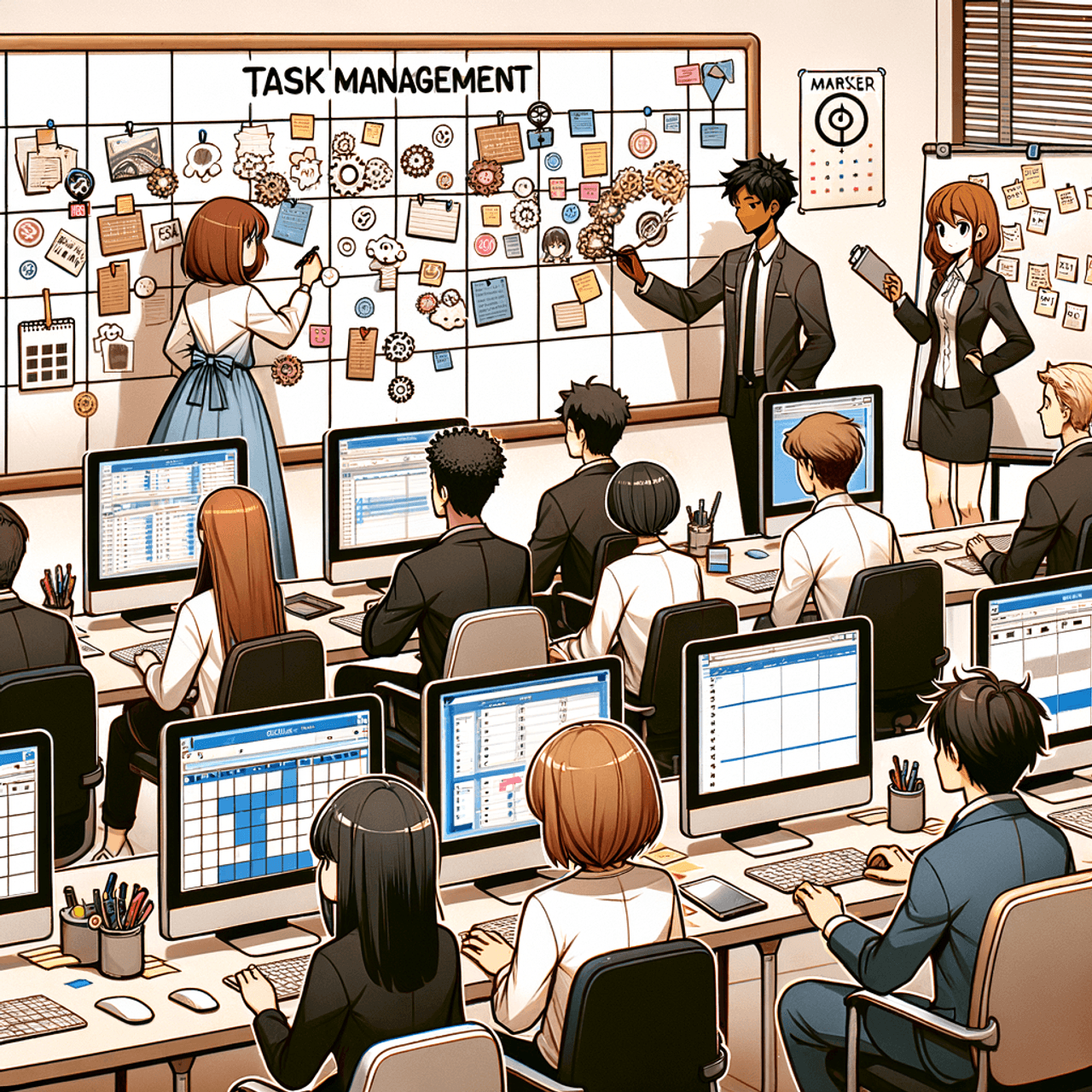 There’s an old fable about a man who tries to chop down a tree with a dull axe. He swings and swings, but the tree doesn’t budge. Finally, a passerby asks him why he doesn’t take a moment to sharpen his axe. The man replies, “I don’t have time—I’m too busy chopping!”
There’s an old fable about a man who tries to chop down a tree with a dull axe. He swings and swings, but the tree doesn’t budge. Finally, a passerby asks him why he doesn’t take a moment to sharpen his axe. The man replies, “I don’t have time—I’m too busy chopping!”
In the same way, many teams continue to struggle with inefficient workflows and miscommunication, simply because they’re too busy to step back and reevaluate their tools. ContentERP offers a sharp, efficient solution, streamlining task management and fostering effortless collaboration.
So, will you keep chopping with a dull axe, or will you sharpen your team’s efficiency with ContentERP’s task management tools?
Related: Transforming a Boring Blog: This Pet Food Company’s Path to Lead Generation
by ContentERP | Oct 13, 2024 | Uncategorized
In 1450, Johannes Gutenberg revolutionized the way information was shared. His invention of the printing press made it possible to mass-produce books, which in turn democratized knowledge and transformed society. The power of his invention wasn’t just in the press itself, but in the way it streamlined the entire process of content creation, from the crafting of words to the delivery of those words to an eager audience. In many ways, ContentERP serves as the modern equivalent, a tool that similarly revolutionizes the content creation workflow, helping businesses, marketers, and creators manage and maximize their output with remarkable efficiency.
 Today’s digital landscape may be more complex than the world Gutenberg knew, but the principles of efficiency, organization, and delivery remain the same. For companies navigating the fast-paced demands of content creation for social media, websites, and blogs, the need for an integrated platform that simplifies processes is more critical than ever. Enter ContentERP, a cutting-edge content operations platform that helps teams streamline their content management workflow and increase productivity across the board.
Today’s digital landscape may be more complex than the world Gutenberg knew, but the principles of efficiency, organization, and delivery remain the same. For companies navigating the fast-paced demands of content creation for social media, websites, and blogs, the need for an integrated platform that simplifies processes is more critical than ever. Enter ContentERP, a cutting-edge content operations platform that helps teams streamline their content management workflow and increase productivity across the board.
Related: Elevate Your Google Search Rankings with Targeted SEO Content
Why Content Workflow Matters
Before delving into how ContentERP can transform your content creation, let’s explore why an optimized content workflow is essential. Much like a well-oiled machine, an efficient content workflow ensures that all parts are working together seamlessly. Without clear structure and streamlined processes, content creation can become chaotic—deadlines are missed, messaging becomes inconsistent, and ideas get lost.
The content creation process isn’t just about writing a blog or posting a tweet. It involves a meticulous workflow of gathering content, ideating, drafting, editing, approving, and publishing—all while ensuring consistency and brand voice. In fact, the content creation workflow can be as layered and complex as a symphony, where every note needs to harmonize perfectly.
ContentERP steps in as the conductor, allowing teams to work in sync and manage their content effortlessly, from initial ideas to final publication. Just as Gutenberg’s press enabled mass production, ContentERP enables teams to scale content creation without sacrificing quality.
The Key Elements of a Content Creation Workflow
When it comes to managing a content team or running solo as a content creator, understanding the core elements of a content creation workflow is crucial for success. Let’s break down some of the steps that ContentERP simplifies:

-
Content Gathering Process: The first step in content creation often involves gathering ideas, research, and assets. Whether it’s visual content for social media or sourcing expert quotes for a blog post, the gathering stage is where the foundation is laid. ContentERP allows users to gather content efficiently by providing a centralized hub where teams can store resources, collaborate, and brainstorm creative content ideas. Everything is easily accessible, preventing the all-too-familiar scramble for assets as deadlines loom.
-
Ideation and Content Creation: Creativity can’t thrive in disarray. Once content is gathered, it’s time for ideas to flow. Whether you’re crafting social media content or a long-form article, the brainstorming phase is key to producing unique and engaging material. ContentERP’s built-in tools and content creation tips help facilitate this process, making it easier to generate ideas, assign tasks, and track progress. With its content creation for social media tools, creating campaigns or posts becomes a collaborative effort, eliminating silos and encouraging innovation.
-
Content Creation Process: At the heart of any workflow is the actual creation process. Whether writing, designing, or editing, the content creation process demands both creativity and structure. ContentERP streamlines this by providing content creators with a set of tools that integrates seamlessly with other platforms like Google Docs and Canva. Writers, designers, and video editors can all collaborate within the same environment, ensuring that everyone is on the same page and that all content aligns with the original vision.
-
Review and Approval: No piece of content is complete without thorough review and feedback. Managing the feedback loop can be one of the most time-consuming parts of content creation, especially when juggling multiple stakeholders. ContentERP simplifies the review process with a user-friendly interface that allows teams to comment, suggest changes, and approve content—all within the platform. This eliminates the need for endless email chains and makes the approval process much more efficient.
-
Content Publishing and Scheduling: Finally, after all the hard work, content must be published and shared with the world. Whether it’s a blog post or a social media campaign, timing is everything. ContentERP integrates with popular publishing platforms, allowing teams to schedule content in advance and ensure it reaches the right audience at the right time. The content management workflow extends all the way to publication, giving users peace of mind that their content will go live without a hitch.
The Benefits of Using ContentERP
The benefits of using ContentERP go beyond just task management and collaboration. By streamlining the content creation process, ContentERP offers several key advantages for content teams and creators:
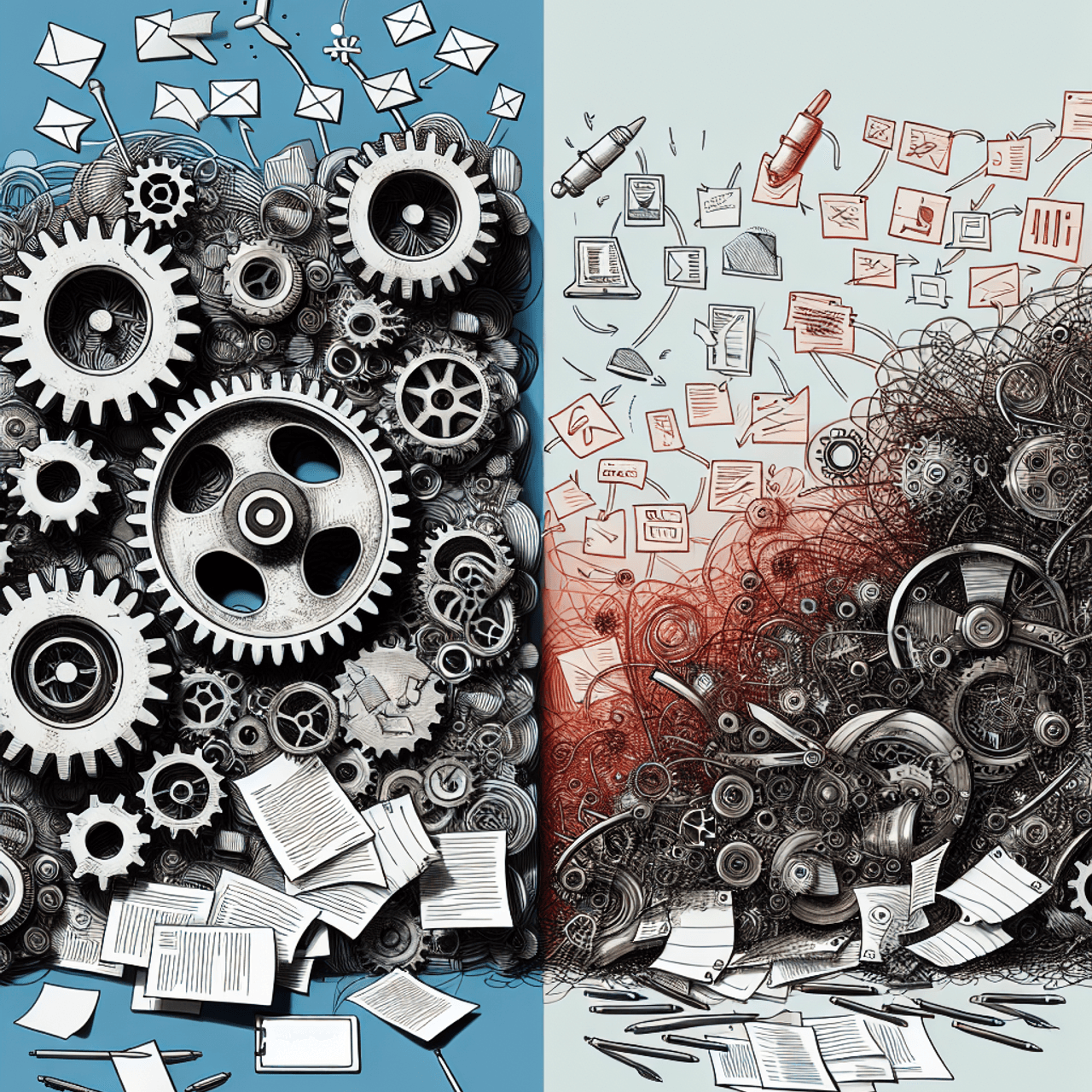
Improved Efficiency: ContentERP consolidates all content-related activities into one platform, reducing the need to toggle between multiple tools or applications. This improves overall efficiency and allows content teams to focus on what they do best—creating impactful content.
-
Collaboration Made Simple: Teams no longer need to work in isolation. With ContentERP, collaboration is effortless. Whether you’re a freelance content writer working remotely or part of a large content marketing team, the platform fosters communication and collaboration, ensuring that everyone stays aligned.
-
Better Organization: Keeping track of deadlines, tasks, and progress can be a headache, especially when managing a large volume of content. ContentERP’s intuitive interface and customizable workflows make it easy to stay organized, ensuring that every piece of content moves smoothly through the pipeline.
-
Enhanced Content Creation Skills: By offering a suite of content creation tools and tips, ContentERP helps creators hone their skills, ensuring that each piece of content is polished and professional. With its wide range of features, from task management to analytics, the platform serves as both a toolkit and a mentor for content creators looking to improve.
A Historical Parallel to Workflow Mastery
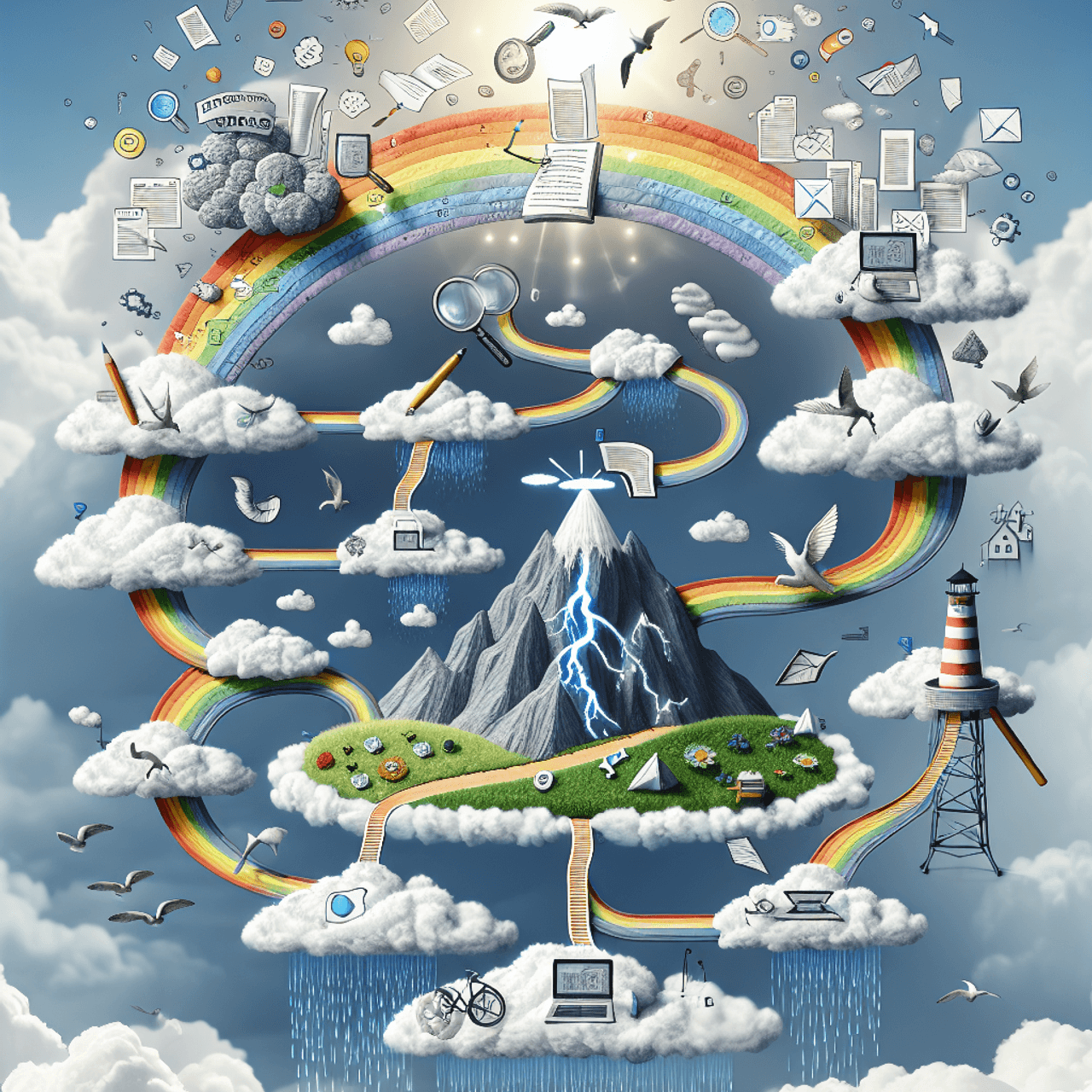 As we consider the importance of mastering the content creation process, we can draw an interesting historical parallel to the construction of the Brooklyn Bridge in New York City. When John Roebling designed the bridge, it was an engineering marvel that required precise coordination between designers, builders, and suppliers. It was one of the most complex construction projects of its time, yet Roebling’s meticulous planning and collaboration ensured its success.
As we consider the importance of mastering the content creation process, we can draw an interesting historical parallel to the construction of the Brooklyn Bridge in New York City. When John Roebling designed the bridge, it was an engineering marvel that required precise coordination between designers, builders, and suppliers. It was one of the most complex construction projects of its time, yet Roebling’s meticulous planning and collaboration ensured its success.
In the same way, content creation requires a coordinated effort between various teams and tools. Much like Roebling’s bridge, which now stands as a testament to human ingenuity and teamwork, your content operation can become a masterpiece of efficiency and collaboration with the right system in place.
Building Your Bridge to Content Success
As content demands grow, teams must work together like the workers on Roebling’s bridge—each person knowing their role, working efficiently, and moving in harmony toward a common goal. ContentERP offers the tools and structure to achieve that level of collaboration and efficiency in content creation.
The question now is: Are you ready to transform your content workflow and build your own bridge to success with ContentERP?
Related: Top Reasons to Ditch Spreadsheets and Embrace ContentERP
by ContentERP | Oct 13, 2024 | Uncategorized
 How do you keep a ship with multiple crew members sailing smoothly toward a shared destination? And more importantly, how do you ensure that every person on board knows exactly what they need to do, when to do it, and how their actions contribute to the ship’s overall journey? In the digital world, managing a content team can feel like steering such a vessel, requiring coordination, communication, and efficiency at every turn.
How do you keep a ship with multiple crew members sailing smoothly toward a shared destination? And more importantly, how do you ensure that every person on board knows exactly what they need to do, when to do it, and how their actions contribute to the ship’s overall journey? In the digital world, managing a content team can feel like steering such a vessel, requiring coordination, communication, and efficiency at every turn.
ContentERP, a centralized content management platform, is the compass that helps content managers steer their ships with precision. From assigning roles to optimizing workflows, ContentERP brings order to the chaos of managing diverse content teams. In this guide, we’ll explore how ContentERP can revolutionize how you manage your content marketing team, ensuring every crew member works in harmony to create and distribute high-quality content.
Related: 5 Costly Content Mistakes Google Penalizes and How to Fix Them
1. What Is a Content Team and Why Does It Matter?
At its core, a content team is a group of professionals with various content skills who collaborate to produce digital content, whether that’s blog posts, social media updates, videos, or more. But like any good orchestra, the success of a content team depends on the harmonious coordination of its players.
A content marketing team typically consists of content writers, editors, strategists, SEO specialists, and sometimes designers or videographers. Each role is essential to the process, with writers bringing ideas to life, editors polishing those ideas, and strategists ensuring that the content aligns with the overall marketing objectives. ContentERP helps organize these roles, making it easier for managers to track who is responsible for what and ensuring that deadlines are met.
2. The Essential Roles in a Content Team
Just as every piece of a puzzle has its place, every member of a content management team has a specific role to play. Here are some key content team roles and how ContentERP helps manage them effectively:
-
Content Writers: The lifeblood of any content team, writers are responsible for producing content that is engaging, informative, and aligned with the brand’s voice. ContentERP’s built-in content writing tools streamline the process, allowing writers to access templates, keyword suggestions, and SEO optimization features in one place.
-
Editors: Ensuring that content is polished and professional, editors play a critical role in maintaining quality. ContentERP’s collaboration features allow editors to leave feedback directly on drafts, track revisions, and approve content for publication seamlessly.
-
Content Strategists: The masterminds behind the content plan, strategists map out the long-term goals and ensure that every piece of content serves a specific purpose. ContentERP helps strategists organize content calendars, track performance metrics, and adjust strategies based on real-time analytics.
-
SEO Specialists: Like a lighthouse guiding the ship, SEO specialists ensure that content is discoverable by optimizing for search engines. With ContentERP’s SEO tools, they can easily integrate keywords, track performance, and make adjustments to boost visibility.
Managing these diverse roles manually can be overwhelming. That’s where ContentERP comes in, providing a single platform to track responsibilities, monitor progress, and ensure that the entire team stays aligned.
3. Streamlining Workflows with ContentERP
One of the biggest challenges of managing a content writing team is the sheer volume of tasks involved in producing, editing, and publishing content. From brainstorming ideas to tracking progress and reviewing drafts, the process can quickly become chaotic. But ContentERP simplifies this by automating key parts of the workflow.
With ContentERP, managers can assign tasks to specific team members, set deadlines, and monitor progress in real-time. No more endless email threads or missed deadlines—everything is tracked within the platform, ensuring that nothing falls through the cracks. ContentERP also integrates with popular content writing services, enabling freelance writers to collaborate seamlessly with in-house teams.
A manager overseeing a content management team can use the platform to ensure that all roles are functioning optimally. ContentERP’s real-time notifications keep everyone in the loop, while its analytics tools provide insights into content performance, allowing for quick pivots when necessary.
4. The Role of Communication in Managing Content Teams
Communication is the bedrock of any successful team, and a content team is no exception. However, with so many moving parts and so many voices in the mix, miscommunication is a common pitfall. ContentERP bridges this gap by providing built-in messaging tools, feedback systems, and collaborative editing features.
Imagine a writer, editor, and SEO specialist working together on a blog post. Instead of using separate tools and platforms for messaging, editing, and SEO optimization, ContentERP allows them to communicate directly within the document. Editors can leave comments, SEO specialists can suggest changes, and writers can make real-time updates—all without leaving the platform.
By keeping all communications within a single interface, ContentERP reduces misunderstandings and ensures that everyone is on the same page. It’s like having a clear, direct channel from the captain to the crew, ensuring smooth sailing even in the most complex projects.
5. Scaling Your Content Team with Ease
As your content demands grow, so too must your team. Whether you’re hiring additional in-house writers or expanding your roster of freelancers, scaling a content team can be a logistical challenge. However, ContentERP makes this process much easier.
When adding new team members, managers can onboard them quickly through the platform, assigning them specific tasks and roles within the content plan. Freelancers can be integrated into the workflow seamlessly, receiving the same real-time updates and feedback as in-house staff. The ability to manage both full-time employees and freelance content writers within one platform is one of ContentERP’s standout features.
6. Boosting Efficiency with Content Writing Tools
Managing a team of talented writers is one thing; providing them with the right tools is another. ContentERP comes equipped with a suite of content writing tools designed to help writers produce their best work. From AI-driven content generators that provide topic suggestions to grammar and style-checking tools, the platform offers everything a writer needs to create high-quality content.
For content strategists and editors, ContentERP offers robust planning and editing features that allow them to manage multiple projects at once. By keeping everything centralized, the platform reduces the time spent toggling between different apps and tools, allowing the team to focus on what truly matters: creating exceptional content.
Conclusion: Efficiency Is the Key to Success
 Managing a content team is like steering a large ship through stormy waters. It requires coordination, focus, and a clear understanding of each crew member’s role. ContentERP acts as the steady hand on the wheel, ensuring that every team member has the tools, direction, and support they need to keep the ship moving forward.
Managing a content team is like steering a large ship through stormy waters. It requires coordination, focus, and a clear understanding of each crew member’s role. ContentERP acts as the steady hand on the wheel, ensuring that every team member has the tools, direction, and support they need to keep the ship moving forward.
As the fable goes, “A wise captain uses the winds to their advantage.” With ContentERP, content managers can harness the winds of efficiency, driving their teams toward success while keeping their processes smooth and streamlined.
So, are you ready to chart a new course for your content team and embrace the power of ContentERP? The journey awaits.
Related: Transforming a Boring Blog: This Pet Food Company’s Path to Lead Generation
by ContentERP | Oct 13, 2024 | Uncategorized
How ContentERP Streamlines Your Content Creation Process
Have you ever felt like your content creation process is more chaotic than creative? If you’ve ever juggled multiple tools, spreadsheets, and endless email threads just to get a single blog post published, you’re not alone. Content creation can often feel like herding cats—ideas are scattered, tasks get misplaced, and deadlines sneak up unexpectedly. But what if there was a way to streamline all of this, bringing every aspect of content creation into one seamless workflow? That’s exactly what ContentERP offers—a centralized solution to simplify and supercharge your content strategy.
The Chaos Before the Calm: A Content Creator’s Dilemma
Imagine you’re an artist without a canvas or a writer with no paper. You have ideas flowing but no structured way to execute them. That’s how many content creators feel without the right tools. Between brainstorming sessions, content drafts, team reviews, and final approvals, content creation can often feel like juggling too many balls. Without a centralized platform, it’s easy to lose track of ideas, deadlines, and creative direction.
Content creation platforms like ContentERP solve this very problem by providing a central hub where every piece of content—be it a blog post, social media campaign, or video script—can be managed from ideation to execution. This removes the need for multiple disjointed tools and endless spreadsheets. Instead, it replaces them with a user-friendly, all-in-one system that provides content creators the clarity they need to *”cut through the noise” and focus on what truly matters*: creating impactful content.
The Heart of Content Creation: Streamlined Workflow
At the heart of every successful content creation process lies a streamlined workflow. From brainstorming creative content ideas to publishing the final piece, efficiency is key. ContentERP offers an intuitive content generator that automates the ideation phase by offering suggestions based on trending keywords, SEO analysis, and industry relevance. It’s like having a personal assistant with an AI-powered brain that’s tuned into what your audience is hungry for.
For those just dipping their toes into the world of content creation, especially beginners, knowing how to start can be overwhelming. Do you brainstorm in one tool, draft in another, and assign tasks in a third? ContentERP eliminates this confusion by offering content creation for beginners that simplifies the process. From setting up your content calendar to delegating tasks, it walks users through each step, ensuring nothing falls through the cracks.
Efficiency Meets Creativity: The Role of AI in Content Creation
In a digital world, where content is produced at breakneck speed, the question arises: how do you ensure your content stands out while managing an efficient process? The answer lies in automation. ContentERP integrates a *content generator AI* that does much more than just spin articles. It analyzes the type of content that resonates with your audience, predicts what’s trending in your niche, and helps generate ideas tailored to your strategy.
Content generator AI is like having a brainstorming partner available 24/7. Need a fresh take on a social media post? The AI suggests new angles. Struggling to come up with blog ideas that’ll capture attention? The AI offers creative content ideas that align with your brand’s goals. It’s not about replacing the human element of creativity—it’s about enhancing it with data-driven insights.
Collaboration Simplified: Managing Teams with ContentERP
One of the biggest hurdles in content creation isn’t the writing—it’s the coordination. Large content teams often find themselves stuck in a communication bottleneck. Feedback on a draft gets lost in endless email chains, while content schedules collide with last-minute revisions. This is where ContentERP truly shines. With real-time collaboration tools and automatic task assignments, it keeps everyone on the same page, ensuring that deadlines are met and content quality remains high.
Whether you’re working with a small in-house team or a network of freelancers, ContentERP’s collaborative features make it easy to track progress, assign roles, and provide feedback. Everyone involved can access the same platform, making it the central hub for all things content-related. It’s like having the ultimate conductor for your creative orchestra, ensuring each instrument—whether it’s copywriting, design, or social media—is perfectly in sync.
Tools of the Trade: The Best Content Creation Tools
ContentERP doesn’t just streamline workflow—it equips creators with some of the best content creation tools available today. These include keyword research tools, SEO analyzers, and a robust analytics dashboard that shows you how your content is performing. It takes the guesswork out of content strategy and gives you actionable insights into what works and what doesn’t.
For content creation beginners, these tools are essential for building a strong foundation. If you’re wondering how to start content creation and achieve a meaningful return on your efforts, ContentERP provides the roadmap. With access to comprehensive analytics, creators can tweak their strategies in real-time, ensuring that their content stays relevant and engaging.
Scaling Creativity: From Beginners to Pros
ContentERP is versatile enough to cater to both beginners and seasoned pros. For content creation beginners, the platform offers step-by-step guidance and creative content ideas that help build confidence. For those with more experience, the advanced analytics and integrated publishing tools allow you to scale your content operations without sacrificing quality.
Whether you’re managing a small blog or a full-scale content strategy for a multinational brand, ContentERP grows with you. Its flexible structure allows creators to experiment with different formats, mediums, and styles—while keeping track of what drives engagement and traffic.
Conclusion: Turning Chaos into Clarity
In the words of Stephen Covey, “The key is not to prioritize what’s on your schedule, but to schedule your priorities.” ContentERP doesn’t just streamline content creation; it transforms how teams and individuals approach content strategy. By providing a centralized platform where content creation tools, collaboration features, and data-driven insights converge, ContentERP turns the chaotic process of content generation into a well-oiled machine.
With its ability to handle everything from creative content ideas to seamless publishing, ContentERP helps creators take control of their workflows. It’s not just about creating content; it’s about creating the right content, at the right time, with maximum efficiency. And in a world where content is king, having the right tools in place can make all the difference.
by ContentERP | Oct 13, 2024 | Uncategorized
What if every piece of content you created was not just an investment but a sure bet?
In the world of digital content, where words, images, and videos are often thrown into the vast ocean of the internet, hoping for a return can feel like gambling. Yet, businesses today can no longer afford to rely on mere luck when it comes to content marketing. Every piece of content represents time, money, and resources, and the question of ROI—return on investment—looms large over every content strategy. What if there was a way to not only measure that return but maximize it?
This is where ContentERP steps in. As the ultimate content management system (CMS) designed to streamline the production process, ContentERP doesn’t just help you manage content. It also equips you with the analytics tools needed to understand and optimize your content ROI, ensuring that every investment drives meaningful results.
Related: Avoid These 5 Content Mistakes to Stay on Google’s Good Side
 What is Content ROI and Why Does It Matter?
What is Content ROI and Why Does It Matter?
Before diving into the powerful tools that ContentERP offers, it’s essential to understand what content ROI means. In simple terms, content ROI is a measure of the revenue generated from a piece of content compared to the costs involved in creating it. ROI meaning isn’t just about dollars and cents—it’s about the value that your content brings, whether in the form of increased traffic, higher engagement, or ultimately, more conversions.
So, what is a good ROI? While there’s no one-size-fits-all answer, most businesses aim for a return of at least 5-10 times the cost of content production. However, a “good” ROI varies based on industry, goals, and the specific type of content being produced. For some, a steady rise in web traffic or higher social media engagement might be just as valuable as an immediate revenue bump.
How ContentERP Transforms the ROI Equation
To boost content ROI, businesses need to move beyond simply publishing content and hoping for results. ContentERP allows teams to manage, track, and analyze their content through a centralized platform—taking the guesswork out of the content production process.
1. Setting Clear Content Goals
ContentERP starts with the basics: setting content goals. Before any article, infographic, or video is created, it’s critical to understand its purpose. Is the goal to drive traffic to your site? Increase social media engagement? Generate leads? What is content marketing if not a strategic approach that aligns your content with your business goals?
With ContentERP’s goal-setting features, teams can align their content with measurable outcomes. This ensures that every piece of content is crafted with a clear purpose and measured against predefined metrics.
2. Optimizing for Maximum Impact
Content creation is not a “set it and forget it” endeavor. With ContentERP, businesses can continuously optimize their content for maximum impact. The platform’s robust SEO tools ensure that your content is search-engine friendly from the outset, increasing the chances of it being found by your target audience.
Through keyword tracking, businesses can see how well their content is ranking for relevant search terms and adjust accordingly. This is particularly important for evergreen content, which can continue driving traffic—and boosting ROI—months or even years after it’s first published.
3. Repurposing Content for Greater Efficiency
Another way ContentERP helps businesses maximize their content ROI is by facilitating content repurposing. Imagine you’ve invested in a 3,000-word blog post. Why not turn that into an infographic, a podcast, or a series of social media posts? ContentERP’s project management tools allow teams to repurpose content easily, stretching the value of each piece and multiplying its return.
By repurposing high-performing content into different formats, businesses can reach new audiences without the need to start from scratch—further boosting content ROI.
Real-World Example: How ContentERP Helped a Company Triple Its ROI
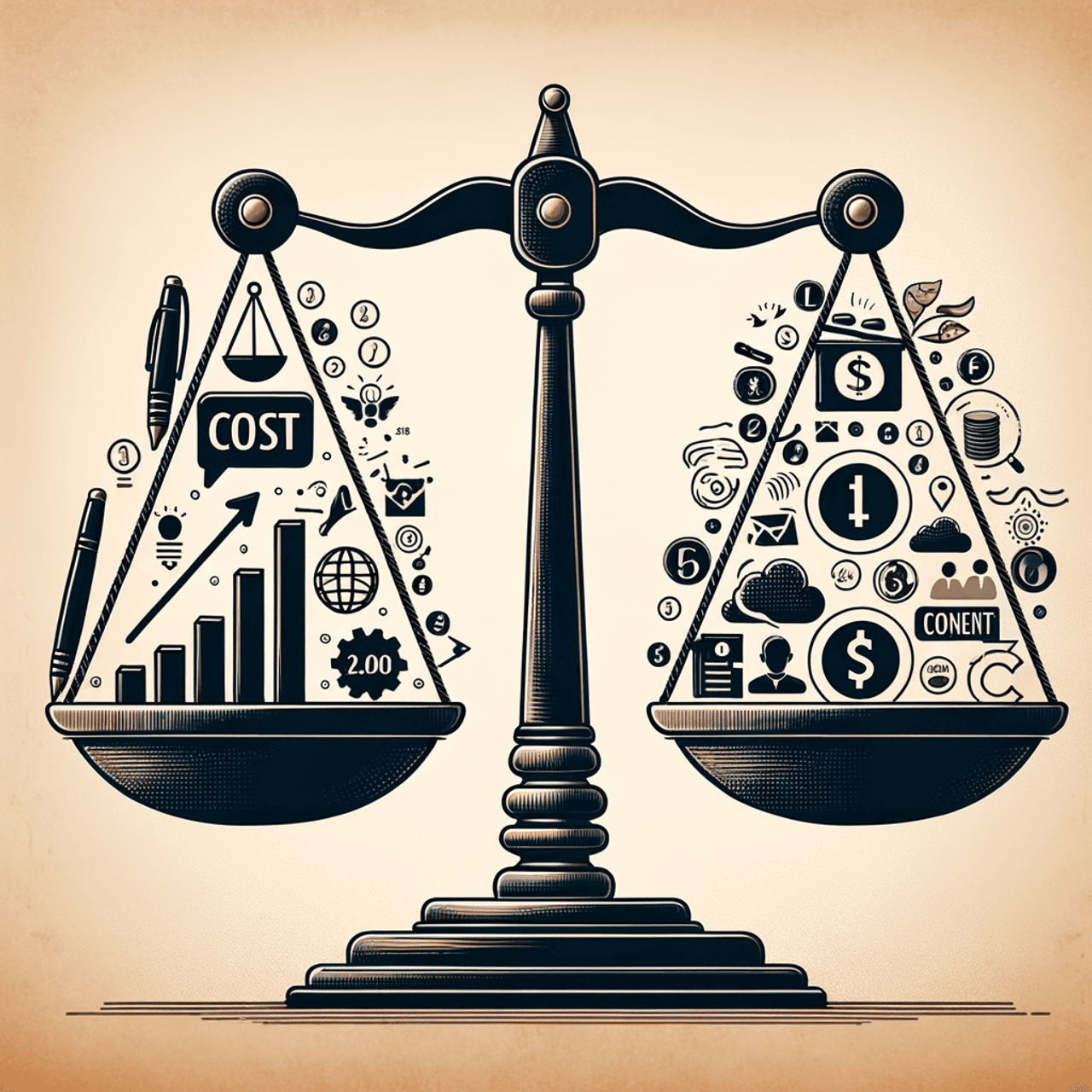 Consider the case of a small e-commerce company that was struggling to justify its content budget. With limited resources, the team needed to ensure that every dollar spent on content would deliver results. With the support of ContentERP’s centralized platform, the company increased its reach across multiple channels, ensuring that every piece of content was not only produced efficiently but also distributed to the right audiences at the right time. The platform’s advanced tools allowed the team to collaborate effortlessly, track progress in real-time, and make data-driven adjustments, ultimately leading to higher engagement rates and improved content ROI.
Consider the case of a small e-commerce company that was struggling to justify its content budget. With limited resources, the team needed to ensure that every dollar spent on content would deliver results. With the support of ContentERP’s centralized platform, the company increased its reach across multiple channels, ensuring that every piece of content was not only produced efficiently but also distributed to the right audiences at the right time. The platform’s advanced tools allowed the team to collaborate effortlessly, track progress in real-time, and make data-driven adjustments, ultimately leading to higher engagement rates and improved content ROI.
By optimizing content performance and simplifying workflows, the company transformed its content strategy into a powerhouse for driving business success. Using the platform’s analytics tools, the team identified that their audience was most engaged with blog posts that included listicles, news, and case studies. They then doubled down on this format, producing more content, which resulted in a 300% increase in lead generation and a threefold increase in content ROI. The ROI meaning shifted from mere cost recovery to a critical driver of business growth.
The Future of Content: Why ContentERP is the Key to Long-Term Success
In an age where content is king but attention spans are fleeting, businesses need more than good content to succeed—they need the right tools to measure and maximize its impact. With ContentERP, businesses can navigate the complex landscape of content marketing with confidence, knowing that every piece of content is working as hard as possible to deliver results.
By combining efficient team management, streamlined content creation, effortless promotion, seamless publishing, and content optimization in a single, user-friendly platform, ContentERP allows businesses to not only create good content but ensure it drives the kind of return on investment that justifies further investment.
Conclusion: The Power of Measurement
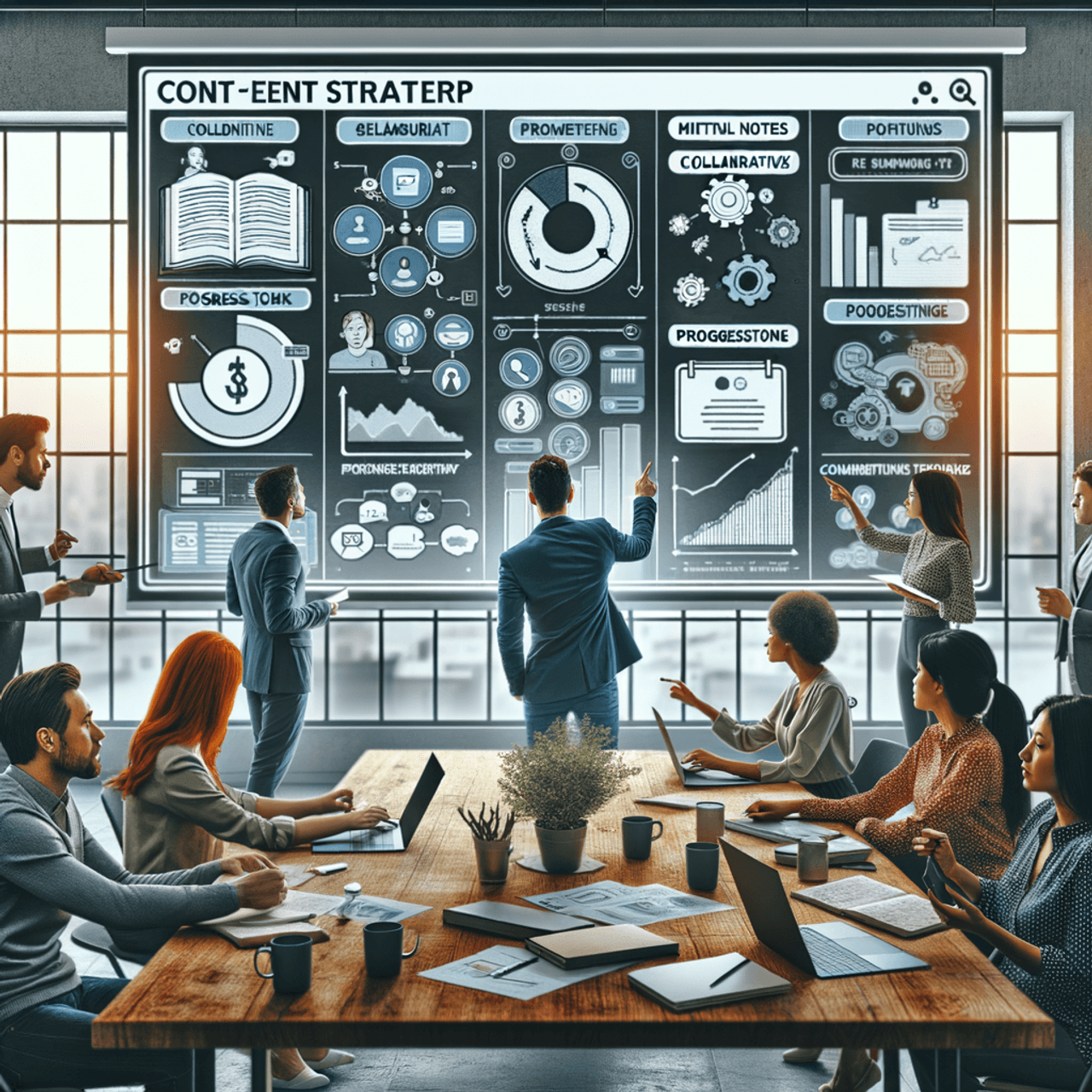 As the saying goes, “You can’t improve what you don’t measure.” In the world of content marketing, this is more than just a proverb—it’s a guiding principle. With the powerful analytics tools offered by ContentERP, businesses no longer have to rely on guesswork. They can track their content’s performance in real-time, optimize it for maximum impact, and ensure that every piece of content contributes to their bottom line.
As the saying goes, “You can’t improve what you don’t measure.” In the world of content marketing, this is more than just a proverb—it’s a guiding principle. With the powerful analytics tools offered by ContentERP, businesses no longer have to rely on guesswork. They can track their content’s performance in real-time, optimize it for maximum impact, and ensure that every piece of content contributes to their bottom line.
Take the story of a tech startup that, after months of creating content without clear direction, decided to invest in a comprehensive content strategy. By using ContentERP to manage content and tweak their approach, they were able to turn their content from an expense into one of their most significant revenue drivers—proving that, with the right tools, content ROI is not just a goal, but a reality.
In the end, successful content marketing is less about volume and more about precision. As businesses continue to face growing demands for quality content, those equipped with the right tools—like ContentERP—will be the ones to thrive in an increasingly competitive landscape.
Related: Link-Building 101: The Foundation for Powerful SEO Results
In 1911, explorer Roald Amundsen set out on a daring quest to be the first man to reach the South Pole. His success wasn’t just the result of bravery but of meticulous planning and teamwork. Amundsen’s team worked in harmony, each member fully aware of their responsibilities, deadlines, and the overall mission. In stark contrast, the competing expedition led by Robert Falcon Scott ended in tragedy, largely due to poor planning and miscommunication. The difference between success and failure often hinges on effective task management and collaboration.
There’s an old fable about a man who tries to chop down a tree with a dull axe. He swings and swings, but the tree doesn’t budge. Finally, a passerby asks him why he doesn’t take a moment to sharpen his axe. The man replies, “I don’t have time—I’m too busy chopping!”
